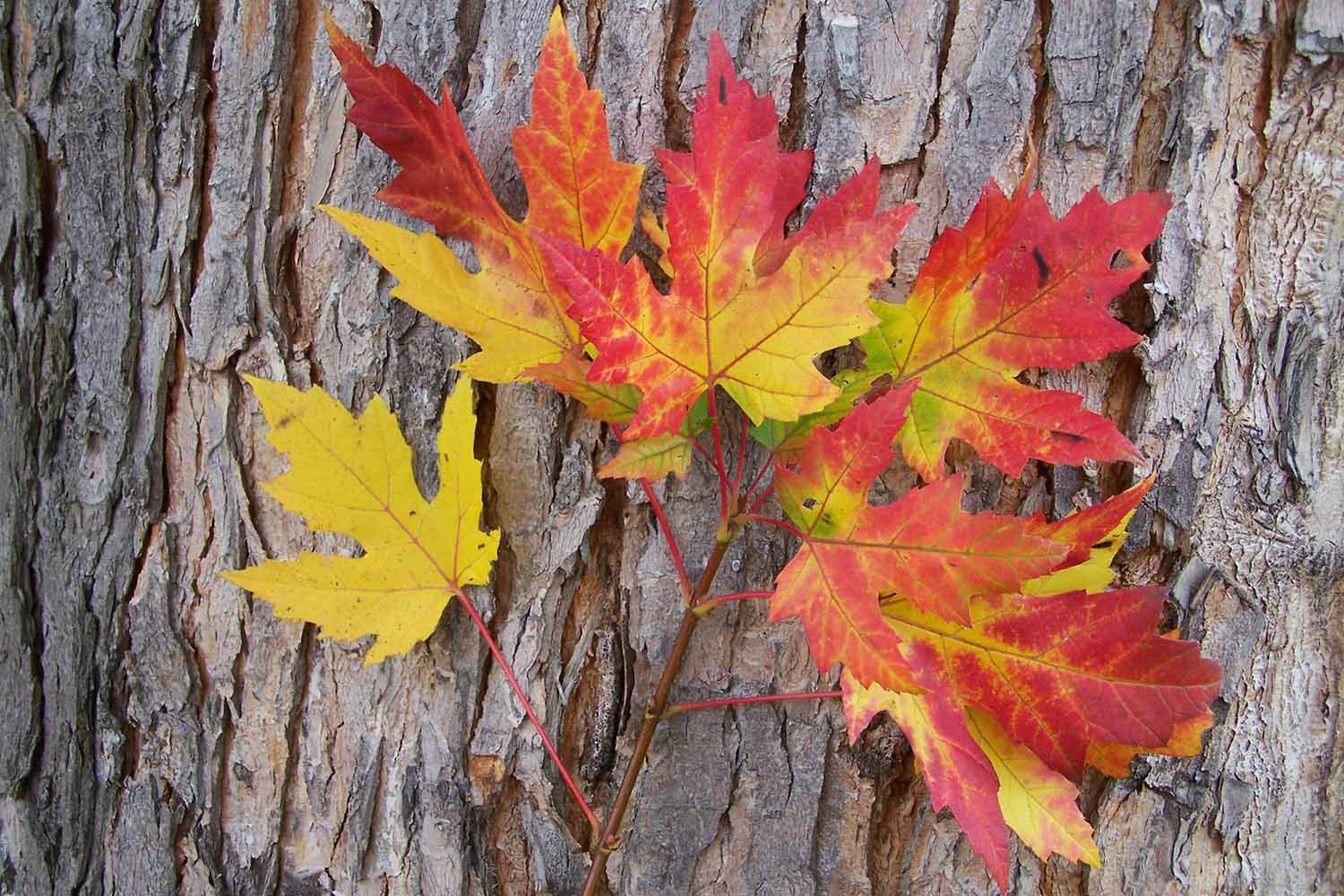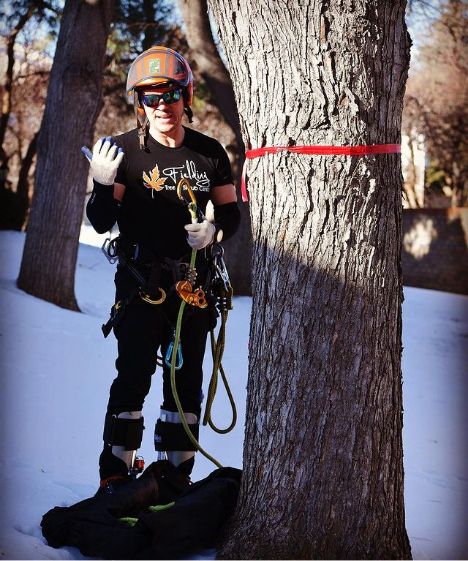Look along the Front Range and you will find maple trees are a mainstay in the Denver area. These majestic beauties come in many varieties and add rich color to the landscape. Find out if you have silver maple trees, or other varieties of maple on your property, and how to properly care for them!
Maple Tree Species Commonly Found In Denver
Surprisingly, there are over 100 different species of maple trees! Different species thrive in different types of environments and many have become a hallmark of their geographical region. In Denver, three maple species are highly prevalent in the urban landscape: the Silver Maple, Norway Maple, and Autumn Blaze Maple.
Here are some interesting fast facts on each species from the Colorado State University:
Silver Maple Trees
Silver maple trees are the oldest established, and most common maple species, in the Denver area. However, it is not the best suited maple tree for the soil. To really flourish, it will require fertilization to balance out its inconsistencies with iron. Here are more notable details on this maple species:
- Most common maple found in the urban landscape
- Grows quickly
- Performs poorly in heavy alkaline clay soils
- Plagued by iron chlorosis
- Grows well in loamy soil with neutral pH or a sandy soil
- Soft-wooded and breaks easily in storms
- Susceptible to rot with age
Norway Maple Trees
A newer variety, the Norway Maple fares better in Denver’s high alkaline soil. If you are considering adding a maple tree to your landscape, a Norway Maple is preferable to the Silver Maple. Norway Maple characteristics include:
- Hard wooded and less susceptible to storm damage
- They have dark green leaves create a full crown that offers lots of shade cover
- Prefer moderate soil moisture and full sun
- Popular varieties include Deborah, Schwedler and Royal Red, for vibrant leaf color
Autumn Blaze Maple Trees
Easily identifiable by its stunning fall foliage, Autumn Blaze Maple is quickly becoming a favorite mainstay in the Denver landscape. Find out why this maple species is highly sought after:
- Popular new hybrid
- A cross between red and silver maples
- Fast-growing, three feet or more per year
- Suffer some from iron chlorosis
- Vibrant orange and red fall colors
Considering planting a new tree this season and want to learn more about different maple species, including silver maple trees? Our certified arborists can advise you on how to choose the right type of maple that will thrive in your landscape.
How to Identify Maple Trees
Maybe you moved into a property with established trees, ones you didn’t plant yourself. Have you ever stopped to wonder what type of trees shade your lawn? Properly caring for your trees starts with knowing what you’ve got!
Not sure if you have any maples? Spot maple trees easily with a close look at some key physical characteristics. Head outside and follow this simple identification guide:
Silver Maple
Leaf
Five-pointed lobes; deep, U-shaped, toothless sinuses. The base of the middle lobe is narrow. The middle lobe may have three of its own smaller lobes. Medium green above, whitish beneath. Heart-shaped leaf base.
Bud
Reddish, blunt or slightly pointed, small. Scales overlap. Extra buds may be present above some leaf scars (there may be flower buds along with a leaf bud that is stalked.) Flower buds are fatter and may have hairy margins. Bud scales are sharper pointed at the tips on silver maple than they are on red maple. Terminal bud has 3-4 pair of scales.
Bark
Trunk bark on older silver maple trees is gray, shaggy and may peel off in vertical strips.
Flower
Greenish-yellow to red, blooming before leaves appear (one of the first trees in our area to bloom). Short dense clusters. No pedals.
Norway Maple
Leaf
Usually 5-lobed, blade as wise as it is long, 4-7 inches, dark green. Sharply pointed and coarsely toothed lobes. Milky sap is visible when fresh petiole is removed from the stem. Hair in corners of veins beneath.
Bud
Largely rounded terminal bud, purplish-brown, 4+ overlapping bud scales. Lateral (side) buds have 2-3 scales.
Bark
Close, tight ridges.
Flower
Inconspicuous, greenish-yellow; blooming profusely in April before leaves appear.
Autumn Blaze Maple
Leaf
Opposite, simple, 2-4” long and wide, 3-5 lobes. A smooth and glossy upper surface is green, lower surface gray-green. Fall color varies, yellow to orange-red to red.
Bud
Red or green dense clusters.
Bark
Smooth, thin gray and damages easily.
Flower
Small, reddish-purple, prior to leafing.
Maple Tree Diseases And Infestations
Majestic maple trees, with their proud tall structure and full crowns, add beauty to your landscape. But when stricken by disease or pest infestation, maple trees can quickly lose their luster and suffer from an array of mild to severe effects.
Learn the common diseases that maple trees are prone to get and be on the lookout for the first signs of infection. Identifying disease early is key to restoring a maple tree back to full health. Here is a list of diseases that often affect maples in Denver:
- Anthracnose: a low threat disease caused by fungi, affects the tree’s appearance. Maples are likely to contract Anthracnose during late spring and early summer, in especially wet and damp conditions. Visible signs of Anthracnose include leaves that curl around a dead-looking brown spot, tan or brown spots near the leaves’ veins, cankers, dying young branches and premature leaf loss. Young maples are especially susceptible!
- Chlorosis: This simply refers to a lack of chlorophyll due to deficiency of one or more of the key nutrients: nitrogen, magnesium, or iron. In Colorado, the alkaline soil is very high in pH levels, and most of the iron is not in an insoluble form not usable by plants. For this reason, trees in the front range suffer specifically from iron chlorosis due to the deficiency in iron that hinders them from properly creating chlorophyll. You’ll be able to recognize chlorosis if you see premature yellowing of tree leaves (yellowing before it’s time to fall in autumn).
- Lichens: This is a common growth on the trunks and branches of trees. Lichens are an organism caused by a combination of fungi and algae, and they can be spotted all over different parts of the tree. They appear as gray to green looking crusty patches, leafy mats, or hanging growths that have a similar texture to moss. Lichens are not at all a disease causing agent. They are epiphytic organisms that simply utilize trees as habitat and do not cause harm to trees at all.
- Powdery Mildew: caused by fungi, this cosmetic disease breeds under hot-humid conditions during the summer months. Outward signs include a white, fine powder-like mildew that covers leaves, robbing them of their vibrant color.
- Leaf Scorch: not a disease so much as it is a cosmetic problem, leaf scorch occurs when low moisture, high temperatures, and dry wind combine during the summer season. The result is scorched looking dry, brown leaves.
- Verticillium Wilt: the most common disease among Denver maple trees, it is caused by soil-bound fungi. The disease can be moderate to severe, depending on how far advanced it has become. It typically develops in late July and August, after an especially hot summer. Visible signs include yellowing leaves that are wilting, concentrated to one area or side of the tree. If not treated, Verticillium Wilt can kill the entire tree.
- Root Rot: caused by mold and poorly drained soil, this disease is so severe that it almost always proves fatal to maples. Occurring in wet seasons, the disease can present itself in a variety of ways: from formations that resemble mushrooms on the trunk to cankers that make the tree look as if it is bleeding.
Furthermore, tree disease is not the only challenge maple trees face in Denver. Spring pests are in full force and target maple trees. Find out which insects are prone to infest maple trees and how to spot an infestation.
- Aphids: these sap-sucking insects range from 1/16- to 3/8-inch long, and can be green, yellowish, pink, gray or black. They attack plant tissue on shoots, buds and the undersides of leaves. They excrete honeydew in their path which can actually attract even more unwanted insects and cause an unsightly mold to grow. Easy to spot with its fuzzy white body, the Woolly alder aphid is what you’re likely to find on a silver or red maple. Leaves on infested trees will shrivel and drop early.
- Gall Maker Mites: mites feed and lay eggs on maple leaves, producing large spots of swelling called galls. The galls can appear as wart-looking bumps, oval protrusions, or felt-textured patches. When a gall develops the mite is protected inside. Galls caused by mites do not cause permanent damage to the tree.
Maple Tree Care And Treatment Options
In addition, with the right care and treatment, maple trees thrive along the Front Range in Denver. When maple trees are well maintained and healthy, they are strong enough to fight off insect infestation. Keeping up with tree care is an investment in your tree’s longevity. Here are our top recommendations for annual care that will help your maples thrive:
- Watering: proper watering is an overlooked but very important tree care practice. Some maples are prone to fungi related diseases if their soil becomes too saturated with water. Leaf scorch and other damage can occur if there isn’t enough water. We can provide expert consultation on how much water you should be giving your maples, and how often.
- Fertilization: for many maple species, even the ones commonly found in Denver, the high alkaline soil can lead to problems with chlorosis. The best way to neutralize this threat is with the right fertilizer application. Balancing the soil and getting your trees the nutrients they crave will keep them strong and healthy.
- Tree trimming: annual pruning and trimming help maples keep their beautiful shape and foliage.
- Insecticides: although maples are not targeted by destructive pests like the EAB, an insecticide may still be applicable for large infestations of mites or aphids. Pest control helps your maples maintain their beautiful foliage.
In any event, if you are concerned that your maple is showing signs of disease or infestation, contact one of our certified arborists immediately! At Fielding Tree Care we take a four step approach for treating maple trees:
- Step 1: A complimentary on-site disease diagnosis of your trees. Sending a picture in advance helps speed things up!
- Step 2: We work to cure the disease, or at least slow it down, with the most viable treatment option available for your tree or shrub’s unique situation.
- Step 3: A proactive approach is implemented to protect your existing trees from disease or infestation.
- Step 4: Unfortunately, sometimes trees and shrubs die, even with our best, safest, and most proven treatment solutions. If your tree or shrub dies, we try to remove the dead plant as soon as reasonably possible. This keeps your property safe from unnecessary infestations and unsightly rotting trees or shrubs.
Create a custom care plan for your silver maple trees! Team up with Fielding Tree Care and get a consultation on all the best practices today!






